21 start with P start with P


When Gramp tied those thin-bodied ephemerella, as he called them, on size-eighteen hooks, their pale green bodies and diaphanous gray wings reminded us of tiny, unmoored sailboats, and when the duns themselves were adrift upon the surface of the pool, we watched as an entire armada of delicate, translucent ships spun and took flight. . . . I couldn't fish right away. I never can when the duns first come up. I have to watch them, suddenly upon the surface, their wings drying for that one day of life above the stream. . . . To have a chance at life, each pale dun for a time must drift, ignorant of the forms that wait below.
In the thirteen stories of Pale Morning Dun, Richard Dokey endeavors to suggest common truths that uncover the human reality any time, in any place. He explores the ephemeral nature of life through an assemblage of characters as diverse as the settings they inhabit: from a beggar on the streets of San Francisco, “The West Coast Coliseum of Consumption,” to a boy and his brother fly-fishing in a peaceful mountain stream, unaware that they have stumbled upon the threshold of a horrific crime; from a desperate husband pursuing his estranged wife into the bloody arena of a bullfight, to a lakeside cottage where two lovers reveal perhaps too much of themselves. Each uniquely rendered character faces a dilemma that leads him beyond what he knows of himself, forcing him to new insights. The characters’ struggles, though distinctively their own, reveal universal truths about human nature and the transient quality of life. Employing an inspired blend of humor, irony, and imagination in seamless narration, Dokey allows one to enter readily into these idiosyncratic lives, inviting the reader to explore his own capacity to be human, to empathize and respond.
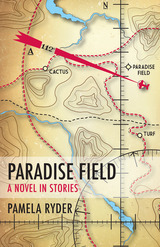
When life dwindles to its irrevocable conclusion, recollections are illuminated, even unto the grave. Such is the narrative of Paradise Field: A Novel in Stories, whose title is taken from a remote airfield in the American Southwest, and while the father recalls his flying days, his daughter—who nurses the old man—reflects as well.
Pamela Ryder’s stories vary in style and perspective, and time lines overlap as death advances and retreats. This unique and shifting narrative explores the complexities of a relationship in which the father—who has been a high-flying outsider—descends into frailty and becomes dependent upon the daughter he has never really known.
The opening story, “Interment for Yard and Garden,” begins as a simple handbook for Jewish burial and bereavement, although the narrator cannot help but reveal herself and her motives. From there, the telling begins anew and unfolds chronologically, returning to the adult daughter’s childhood: a family vacation in France, the grotesqueries of the dinner table, the shadowy sightings of a father who has flown away.
A final journey takes father and daughter back to the Southwest in search of Paradise Field. Their travels through that desolate landscape foreshadow the father’s ultimate decline, as portrayed in the concluding stories that tell of the uneasy transformation in the bond between them and in the transcendence of his demise. Taken together, the stories in Paradise Field are an eloquent but unsparing depiction of infirmity and death, as well as solace and provocation for anyone who has been left to stand graveside and confront eternity.

Each day of working parenthood is a rollercoaster of success and failure. My child ate a carrot! Then spit it out on the dog. I got to work on time! But there is a mystery stain on my dress shirt and this Tide stick is definitely making it worse. Also yes, that was “Baby Shark” I was humming while accidentally unmuted on the Zoom call, and no, I am not going to be able to sew an octopus costume from scratch by Friday. Please tell me there is something available at Target.
As a parent, we live through levels of both joy and sorrow that we didn’t even know existed before. And we wonder—is it only me? Am I alone in this? In Parenting on the Frontlines, we explore both the lighter and heavier sides of working parenthood. The stories shared here are written by healthcare workers at Michigan Medicine, but all caregivers will find pieces to which they can relate. Most importantly, we want you to know that you are not alone on your journey, no matter where it takes you.
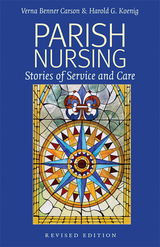
The engaging stories in Parish Nursing provide accessible and enjoyable accounts of real parish nurses, both paid and volunteer, who attend to the needs of their congregations in a variety of ways—from home, hospice, and hospital visits to community outreach. This revised edition gathers their stories of hearing and heeding God’s call, of their faith that they are doing the “right thing,” of their joys, sorrows, and challenges, and of their quiet dedication as they offer their time and talents to meet the needs of others.
By offering inspiration and encouragement, along with a healthy dose of updated practical advice, this collection will make parish nursing theory come to life. These stories will honor practicing parish nurses, will guide the way for anyone contemplating parish nursing as a career, and will challenge church members and leaders to examine the role that their congregations play in health ministry—especially in meeting the long-term care needs of an aging population.


A generation of Italian authors dedicated their lives, their works, and their voices to the primary driving force behind twentieth-century narratives of World War II. Renata Viganò was an active member of the Italian Resistance during World War II, and, like many of her male counterparts, she depicted the actions of the brave people who contributed to and participated in the partisan movement. Unlike her counterparts, however, Viganò vividly portrayed the experiences of women, notably women on the front line, in her posthumously published Matrimonio in brigata, here translated for the first time in English as Partisan Wedding.
"If it had not been for them, the women . . . who got used to `men's business,' . . . the partisan army would have lost a vital, necessary force." The women in Partisan Wedding joined the struggle for many reasons; some for their husbands, others for their fathers, brothers, or sons; some for a sense of justice and the desire to do what was right. Whatever the cause, Viganò demonstrates that women maintained the ability to nurture and to care, to preserve their female qualities in the face of war.
Because of her own role as a partisan, the stories in Partisan Wedding are based on Viganò's personal experiences. Two stories in the collection are specifically autobiographical: "Acquitted" and "My Resistance." Relating her own plight to find her husband, a partisan commander, after his sudden arrest, "Acquitted" aptly conveys Viganò's struggle to maintain her strength in the face of complete helplessness. "My Resistance" is a personal account of her own experiences during the war and the women she met along the way.
Partisan Wedding is an invaluable contribution to the literature of the Second World War, completing the picture of those involved in the struggle for freedom. Viganò's remarkable prose, equally beautiful and terrible in its description of the minute details of human suffering and sacrifice, opens a window to a world that has rarely been seen, and a world not easily forgotten.

A superb success as a bird, combining great speed, aeronautical grace, and fearlessness...inhabitant of wild places, inaccessible cliffs, and skyscrapers...worldwide dweller, trans-equatorial migrant, and docile captive—the peregrine falcon stands alone among all others of its kind. Perhaps this is why so many varied people rushed to its aid when it faced decimation by pesticide poisoning.
In this personal and highly entertaining memoir, Jim Enderson tells stories of a lifetime spent studying, training, breeding, and simply enjoying peregrine falcons. He recalls how his boyhood interest in raptors grew into an ornithological career in which he became one of the leading experts who helped identity DDT as the cause of the peregrine falcon's sudden and massive decline across the United States. His stories reveal both the dedication that he and fellow researchers brought to the task of studying and restoring the peregrine and the hair-raising adventures that sometimes befell them along the way. Enderson also seamlessly weaves in the biology and natural history of the peregrine, as well as anecdotes about its traditional and widespread use in falconry as an aggressive yet tractable hunter, to offer a broad portrait of this splendid and intriguing falcon.

You could find out anything at Jim's, and Larry and I liked to be in the know. Information (not gossip) was passed back and forth constantly. Did you hear about the four couples engaged in "wife- swapping" in town? The mechanics and gas pumpers at Jim's could fill you in. Were you interested in the last time the Baptist minister beat his wife? Who your cute French teacher slept with a couple nights ago? Jim's had the answers. The place held another attraction for me: if you were under twenty-one and wanting some liquor for Friday night, Jim's son, Jimmy the Bomb, just out of the Marine Corps, had no problem picking up a bottle or two for you at the liquor store on the east side of town.
Set mainly in the Midwest, these tales are inhabited by ordinary, decent people who, often to their surprise, find joy and meaning under difficult circumstances. Many of the stories depict isolated moments of perfection in a world that routinely forces its imperfections on us. A teenager wrestles with guilt over an accident he caused in “Perfection in Bad Axe.” In “A Knight Pursued,” a young prosecuting attorney confronts on the same day his first autopsy and his wife’s unexpected desire to have a baby. A devout, hardworking business owner is drawn into a lawsuit that threatens his marriage and leads him to question his most deeply felt principles. “Center of Gravity” finds a middle-aged law professor overcome by his chaotic life and searching for a degree of peace. These are the finely developed characters of Bernthal’s stories—people we recognize, but who never seem overly familiar. Interesting, substantial, and utterly engrossing, each one could be just like any one of us, an ordinary Jane or Joe, trying to maintain or find order in a life sometimes filled with disorder.


Original photographs taken by the author accompany his writings and invite the reader to contemplate the often-blurred lines between reality and memory.
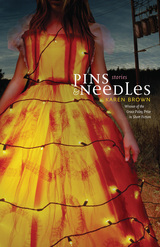
In "She Fell to Her Knees," Nell inherits the neglected house in which her mother died years before, and begins an affair with the neighbor. The narrator of "Apparitions," who has recently returned the blind grandson she was raising to the care of his mother, invites a confused young man into her home. In "The Ropewalk," a bartender haunted by her abandonment of her own child aids a customer in a struggle for custody of her daughters. A pregnant teenager in "Unction" comes to accept the reality of her situation while working a summer job counting parts in a bookbinding machine shop. Annie, the young mother with a tragic past in "Pins and Needles," leaves her infant daughter to go on an errand in a snowstorm, and picks up a boy she doesn't know.
What remains a constant in these stories is the tangible presence of the natural world. Each story moves toward the moment in which its characters, navigating loss, learn acceptance. Like the single mother in "Destiny," they see their lives happen—"all around, just then, forever.

Summer afternoons at Forbes Field, playoff Sundays with the Steelers, winter nights at the Igloo cheering for Mario and the Penguins: Pittsburgh Sports captures all that and more. With stories from sports fans, historians, and former athletes, Pittsburgh Sports mixes personal experiences with team histories to capture the full range of what it means to be a sports fan—in Pittsburgh, or, by extension, anywhere.
A book that can be read cover-to-cover, or in bits and pieces, Pittsburgh Sports includes chapters on the ill-fated Pittsburgh Pipers, who won the American Basketball Association’s first championship, then folded four years later; the Pittsburgh Crawfords and the Homestead Grays, perennial Negro League powerhouses; Johnny Unitas, Joe Namath, Jim Kelly, Joe Montana, Dan Marino, and other legends of western Pennsylvania high school football; boxing’s illustrious past in the Iron City; football reminiscences by a former Steelers punter; and the ups and downs of the Pittsburgh Pirates.

Selma detests my small considerations of strangers. When she catches me nodding at the panhandlers she ignores, or opening doors for women I don't know, she says nothing, but holds herself tall and aloof. She is doing it for the both of us. She is compensating for what she believes is a weakness in her husband that, even in this day and age, a black man still cannot afford. And she may be right. But at this stage of my life I feel not so much black or male, middle-aged or well-to-do or professional, as incomplete. I am son to my father, father to my boys, husband to my unhappy wife, but somehow more lost than found in the mix.

In each of these ten stories, Gwen Goodkin forces her characters to face the dramatic events of life head-on—some events happen in a moment, while others are the fallout of years or decades of turning away. A boy is confronted by the cost of the family farm, an optometrist careens toward an explosive mental disaster, a mourning teen protects his sister, lifelong friends have an emotional confrontation over an heirloom, and a high school student travels to Germany to find his voice and, finally, a moment of long-awaited redemption.

Despite that the world around me does not value play, in my creative life, play is necessary. In fact, I have discovered it is the real work I do as an artist and teacher. As a storyteller, writer, teacher, and imaginative thinker, it is play that has produced the most desired results in my life, in my work, and especially, in my creativity. It is in play that we experience who we are and we begin to extend our choices. Play is not consciously prepared; discovery that happens in the moment. It invites reflection. In fact, Plato once shared, “You can discover more about a person in an hour of play than in a year of conversation.”
In this book, you will discover new ways to work with your story craft and find new story direction using play. Indeed, play is a meaningful way to create and learn.
In both childhood and adult play, the imagination plays a central role in the meaning making process. Although there are many types of play: school-based, recess, sports, this work is rooted in play inviting the writer, storyteller, or imaginative thinker to make choices as they work to create meaning in their work.
I will share how collaborative play can increase your choices when making a story. You will find not only exercises to build your story making and telling skills, but pedagogy of practice to use when called to create story.
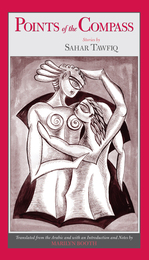
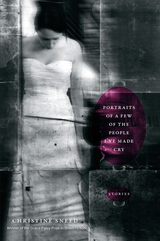
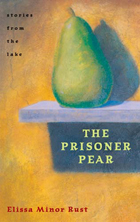
The twelve stories in The Prisoner Pear: Stories from the Lake take place in an affluent suburb of Portland, Oregon, but they could be taken from any number of similar enclaves across the United States. These stories infuse stark reality with occasional hints of magical realism to explore what the American dream means to twenty-first-century suburbanites. In a city where the homecoming queen still makes the front page of the weekly newspaper, ducks caught in storm drains and stolen campaign signs make up the bulk of the paper’s crime reports. The community’s hidden complexities, however, rival those of Sherwood Anderson’s Winesburg, Ohio.
Each of the stories begins with an entry from the newspaper’s police blotter. Elissa Minor Rust fills in the background to these small, odd events-a headless parakeet found in a mailbox, a nude jogger, an alarmingly deathlike discarded teddy bear. Her stories, both humorous and disturbing, probe beneath the clear, hard surface of a community into the murky depths beneath.
The lake at the center of town is a constant in the lives of this town’s people, and it reappears throughout the book as a symbol of wealth and power, of love and loss. The Prisoner Pear offers a rare look inside the heart of suburban America. Reading these stories is, as one character observes, “like seeing the town from the inside out, as if the lake was its heart and the rest merely its bones and skin.”
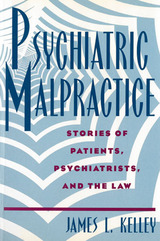
• Two weeks after Johnny Moore was discharged from a psychiatric hospital, the deeply troubled teenager took a lethal overdose of the antidepressant prescribed by his psychiatrist.
• Dennis Gould suffered from paranoid schizophrenia. He let a streetcar cut off his right arm rather than carry out his divine mission to kill his ex-girlfriend, Shelley Rotman; three years later––while under psychiatric care and after several hospitalizations––Gould stabbed the young woman to death with his left arm.
• After seven months of psychotherapy as his only treatment in a private psychiatric hospital, Raphael Osheroff’s symptoms of the agitated depression that had destroyed his medical practice and personal life were more severe than ever. At a second hospital, Osheroff was given the antidepressant drugs he had been asking for––and he rapidly improved.
• Joan Barkley went to Dr. Jonathan Fox for help in overcoming her addiction to Darvon. After a year of therapy, the twice-weekly sessions turned into intense sexual encounters, which continued for two years.
James Kelley tells the true stories of people who sought help from psychiatrists and ended up suing them for malpractice. These tales are compelling, tragic, and sometimes bizarre. They offer a unique view into a relationship that is normally confidential and caring––but can be catastrophic when it goes wrong. Kelley discusses several cases that received national attention: former Reagan administration press secretary James Brady's suit against the psychiatrist who had been treating John Hinckley; the Tarasoff decision that established the psychiatrist’s duty to warn potential victims of a patient’s threats; and the disciplinary proceedings against Dr. Margaret Bean-Bayog for her unusual “mothering” treatment of Paul Lozano.
Kelley accompanies detailed accounts of courtroom clashes––based on court records––with clear, even-handed treatments of four kinds of psychiatric malpractice cases: a patient’s suicide, a patient’s violence against other people, a psychotherapist's sexual misconduct, and the use of unconventional treatments. With a wealth of examples, he explains the role of psychiatrists as expert witnesses against each other, the difficulties of predicting the outcomes of these suits, and the balances psychiatrists and judges have to strike between the duties owed to patients, on the one hand, and to society on the other.
Whether you identify with the patients or the psychiatrists, you will find these tales unforgettable. Kelley writes in nontechnical language for the general reader, stressing the human elements. His lucid analyses of key, current issues make his book essential reading for professionals in mental health or law––and for anyone contemplating a malpractice suit.

In twenty absorbing vignettes, The Python Killer renders a vivid portrayal of Nzema life. An unobtrusive observer, Grottanelli gives center stage to the Nzema narrators who tell their own vibrant, delightful, and mystical stories. This exotic world of coconut groves, nza (palm wine), cassava, and poisonous snakes is inhabited by a people who believe in sinister witches, oracles, jealous gods, and angry nwomenle (ghosts) to whom they offer "sheep, some rice, eggs, and drinks, including two bottles of Coca-Cola." Witches are all the more dreaded for their habit of stealing their female kin's wombs and for their faculty of turning instantly into hogs, snakes, or millipedes. Men, even if nominally Christian, may have as many wives as they can afford. Ghosts haunt the ocean beaches by night and may even sneak into villages and homes.
The Python Killer joins a growing number of recent works in anthropology that emphasize the voices of indigenous peoples. To provide a foundation for the stories, Grottanelli discusses the history, family ties, and beliefs of the Nzema in an introduction, and in an appendix he offers a theory of witchcraft as allegory. The only anthropologist to have lived among the Nzema, Grottanelli brings the realities of their lives to anthropologists, Africanists, and curious readers.
READERS
Browse our collection.
PUBLISHERS
See BiblioVault's publisher services.
STUDENT SERVICES
Files for college accessibility offices.
UChicago Accessibility Resources
home | accessibility | search | about | contact us
BiblioVault ® 2001 - 2024
The University of Chicago Press









